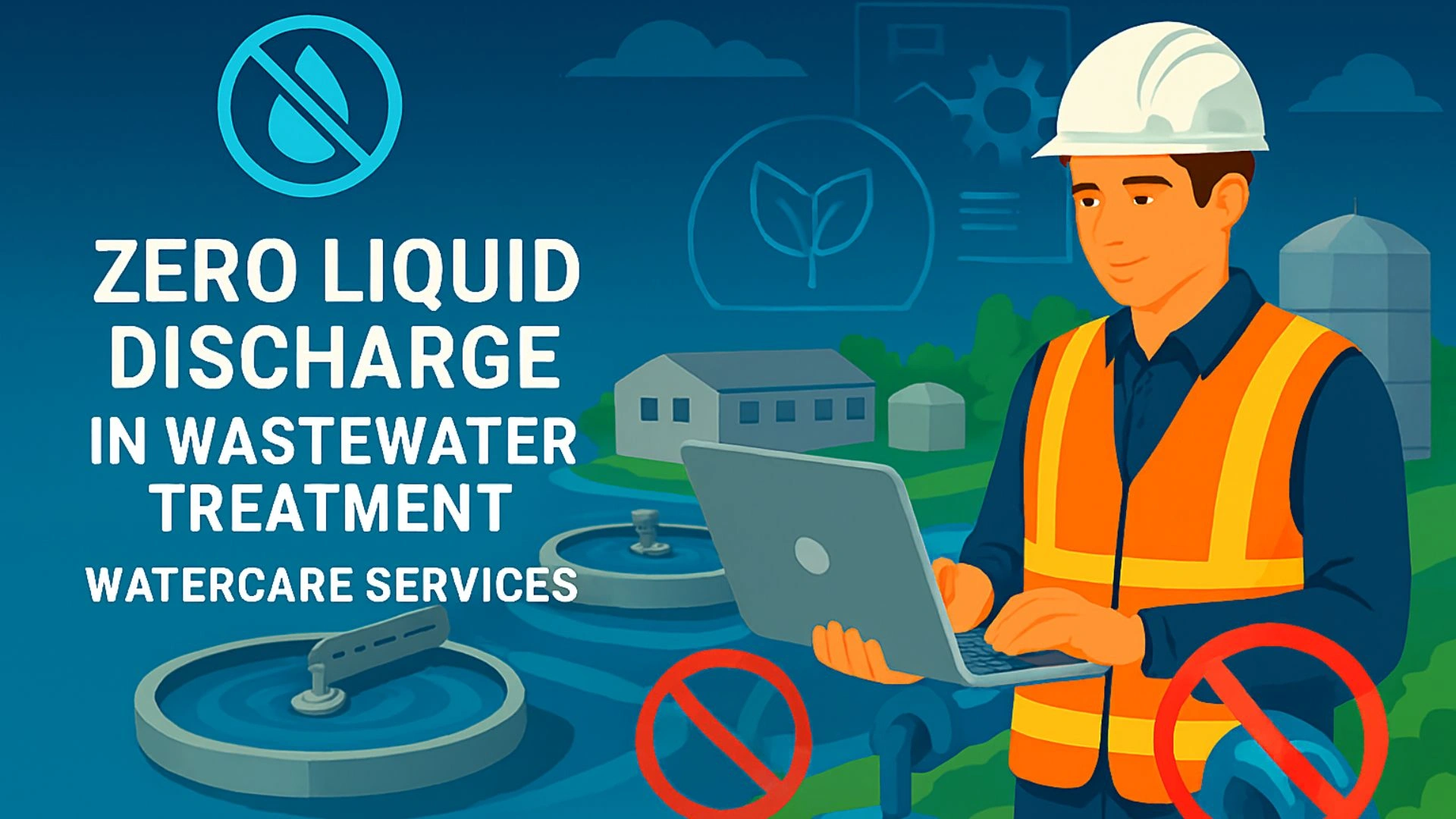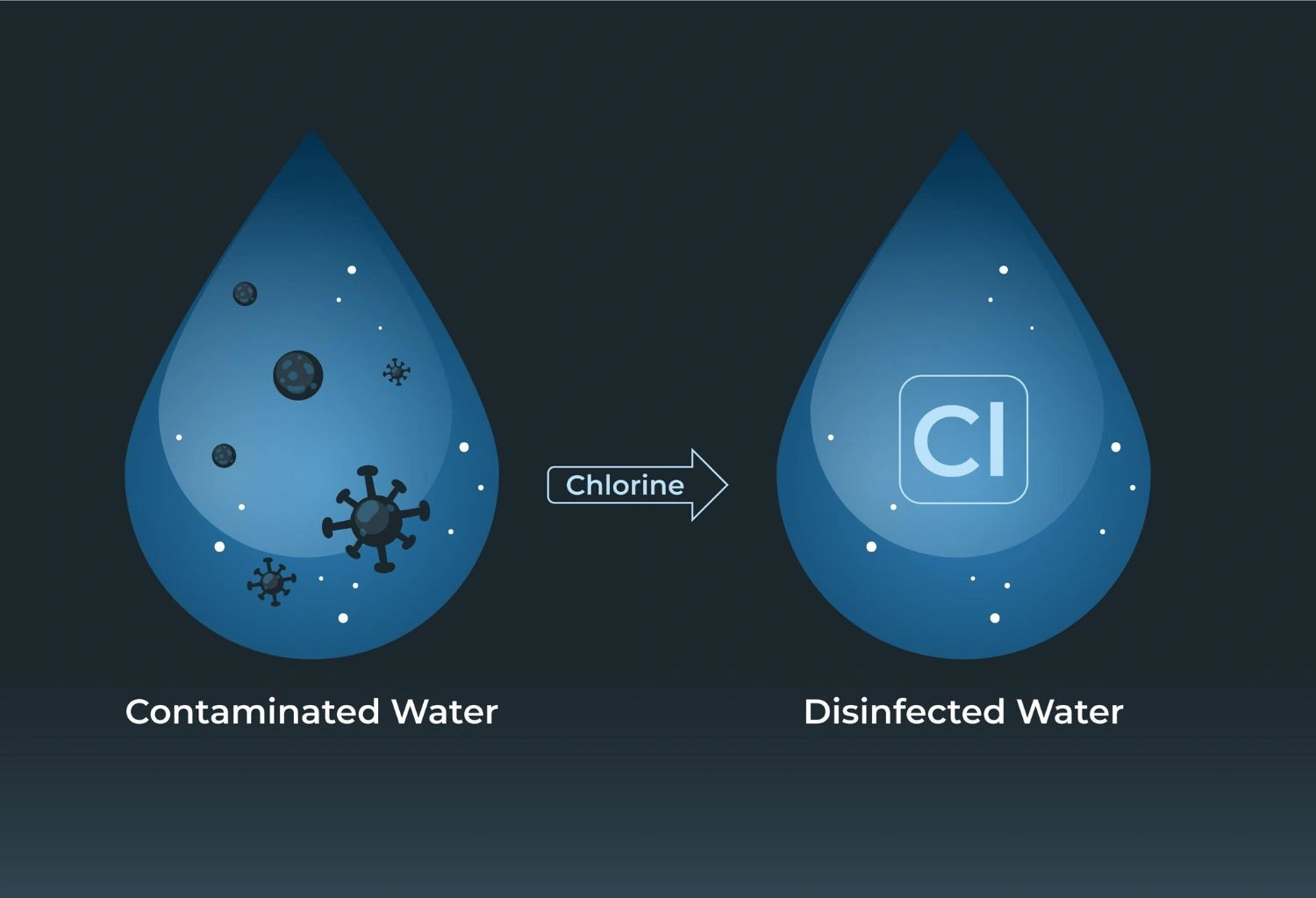In an era where water scarcity is becoming a pressing concern, Zero Liquid Discharge (ZLD) technology offers a revolutionary solution to wastewater management. So, what exactly is ZLD? In simple terms, ZLD is a water treatment process that eliminates liquid waste entirely. Unlike traditional methods where wastewater is often discharged into rivers or oceans, ZLD systems treat water to the extent that no liquid is released, leaving only solid waste. This ensures the highest level of water reuse, reducing the need for fresh water and protecting the environment.
This technology is not just about water treatment—it’s about making water resources available for reuse, reducing pollution, and conserving the environment. As industries continue to face stricter environmental regulations, adopting zero liquid discharge systems is becoming an increasingly popular choice for sustainable wastewater management.
How Does Zero Liquid Discharge Technology Work?
How Do ZLD Systems Achieve Water Reuse and Conservation?
Zero Liquid Discharge technology works by using a combination of advanced water treatment processes, such as reverse osmosis, multi-effect distillation, evaporation, and crystallization.Here’s a step-by-step breakdown of how it works:
- Initial Filtration and Pre-Treatment: Wastewater is first filtered to remove large particles and impurities. Pre-treatment helps to prepare the water for further processes, ensuring the efficiency of the following steps.
- Reverse Osmosis (RO): This step uses a semi-permeable membrane to remove dissolved salts, heavy metals, and other contaminants from the wastewater. The clean water produced in this stage can be reused in the process, and only concentrated brine is left behind.
- Evaporation and Crystallization: The remaining wastewater is subjected to evaporation. In this process, the liquid is heated to produce steam, which is then condensed and collected as pure water. The solid residue left after evaporation is either sent for disposal or further processed.
- Final Water Reuse: The purified water can be used in industrial processes, reducing the reliance on fresh water for operations.
Through these steps, ZLD systems allow industries to reuse nearly 100% of the water they treat. The only byproduct is solid waste, which is manageable and can be safely disposed of or repurposed.
Zero liquid discharge (ZLD)
What Are the Benefits of Zero Liquid Discharge in Wastewater Treatment?
How Is ZLD Revolutionizing Water Conservation Techniques?
Zero Liquid Discharge technology is rapidly transforming the way industries approach water management. With growing concerns over water scarcity, especially in industrial regions, ZLD offers several significant benefits that can reshape the future of water conservation:
- Maximized Water Reuse: ZLD systems help industries recycle nearly all of the water used in their processes. By recovering and reusing water, these systems help conserve fresh water and reduce dependence on natural water sources.
- Environmental Protection: By eliminating wastewater discharge into the environment, ZLD systems prevent the pollution of rivers, lakes, and oceans. They ensure that no harmful chemicals or contaminants are released, contributing to cleaner ecosystems and reducing the environmental footprint of industrial operations.
- Cost Efficiency: While the initial investment in ZLD systems can be high, the long-term savings are significant. Companies save on water procurement costs and avoid potential fines for non-compliance with water discharge regulations. In addition, they reduce the need for water treatment chemicals.
- Compliance with Regulations: Many countries and regions have stringent environmental laws that mandate zero discharge from industries, especially those that generate large volumes of wastewater, like textiles, pharmaceuticals, and chemicals. ZLD technology helps industries meet these regulatory requirements, avoiding penalties and supporting sustainability initiatives.
- Improved Corporate Image: Businesses that adopt sustainable water management practices, like ZLD, are often seen as responsible and environmentally conscious. This enhances their reputation among consumers, investors, and stakeholders, which can translate into better business opportunities.
How Do Zero Liquid Discharge Systems Contribute to Sustainable Wastewater Management?
What Role Does ZLD Play in Sustainable Water Practices?
Sustainable wastewater management is all about minimizing the environmental impact of industrial processes while ensuring efficient water usage. Zero Liquid Discharge technology is at the forefront of this movement, offering a solution that aligns perfectly with sustainability goals.
- Efficient Resource Management: By treating wastewater and ensuring that it is either reused or safely disposed of, ZLD systems help industries make the most of available resources. This approach reduces the need for extracting additional natural resources, such as fresh water, and helps minimize waste generation.
- Reduction in Landfill Waste: While many wastewater treatment processes leave behind sludge or contaminated water, ZLD systems minimize waste. The solid byproducts produced are generally non-toxic and can be disposed of safely, reducing landfill contributions.
- Energy Efficiency: Modern ZLD systems are designed to be energy-efficient, using less energy than traditional treatment methods. They are also integrated with energy recovery systems to minimize their carbon footprint, contributing to a more sustainable industrial operation.
- Climate Change Mitigation: Water conservation techniques like ZLD are essential in combating climate change. Water is a critical resource that many industries depend on, and with ZLD, the reliance on natural water bodies is drastically reduced, promoting more sustainable industrial processes.
How Can Industries Benefit from ZLD Wastewater Treatment Systems?
What Are the Practical Applications of ZLD in Industry?
Zero Liquid Discharge systems are not just a theoretical solution—they are actively being used across various industries to manage wastewater more effectively. Here’s how different sectors benefit from adopting ZLD systems:
- Textile Industry: The textile industry is notorious for its high water consumption and chemical-laden wastewater. ZLD technology helps textile plants recycle water, ensuring a cleaner process and compliance with environmental regulations.
- Pharmaceutical Industry: Pharmaceuticals generate large volumes of wastewater that can contain active pharmaceutical ingredients (APIs), which are harmful to aquatic life. ZLD systems ensure the safe treatment of wastewater, enabling pharmaceutical companies to reuse water and protect the environment.
- Food and Beverage Industry: Food production uses significant amounts of water, which results in high wastewater output. ZLD systems help food manufacturers treat and recycle water, minimizing their environmental impact while adhering to health and safety standards.
- Power Plants: Power plants, especially those using thermal processes, require massive amounts of water for cooling. ZLD technology allows power plants to recycle water efficiently, reducing the need to discharge contaminated water into nearby bodies of water.
- Oil and Gas Industry: The oil and gas industry generates large quantities of wastewater, much of it contaminated with oil and chemicals. ZLD systems treat this water, ensuring it can be safely reused or disposed of, while reducing the risk of contamination.
What Are the Challenges in Implementing ZLD Systems?
Why Are Some Industries Hesitant to Adopt ZLD Technology?
Despite its clear benefits, the adoption of Zero Liquid Discharge systems can be challenging. Here are some common hurdles industries may face when considering ZLD:
- High Initial Costs: The installation of a ZLD system involves significant upfront investment. The cost of purchasing and maintaining the necessary equipment, such as reverse osmosis membranes and evaporators, can be a barrier for some businesses.
- Energy Consumption: Although ZLD systems are designed to be energy-efficient, they can still consume considerable amounts of energy, especially during the evaporation and crystallization processes. This could increase operational costs for energy-intensive industries.
- Complexity of Operation: ZLD systems require regular monitoring and maintenance to ensure optimal performance. The complexity of the system may require skilled operators and specialized training.
- Waste Disposal: While ZLD systems eliminate liquid waste, the solid byproducts produced still need to be managed. Industries must ensure proper disposal or recycling of these solids, which could involve additional processes or costs.
Conclusion: The Future of Water Conservation in Wastewater Treatment
Zero Liquid Discharge technology is truly transforming the way industries manage wastewater.
As the world continues to face water scarcity and environmental concerns, ZLD offers a sustainable solution that promotes water reuse and protects natural resources. By adopting water conservation techniques like ZLD, industries can not only comply with regulations but also play an active role in safeguarding the planet’s most precious resource.
The integration of ZLD technology into industrial wastewater treatment processes represents a significant step toward sustainable development, where both water and the environment are treated with the care and respect they deserve. It’s clear that Zero Liquid Discharge is not just a trend but a necessity for industries looking to reduce their environmental footprint while benefiting from water reuse systems.
FAQs About Zero Liquid Discharge (ZLD) Systems
1. What is Zero Liquid Discharge (ZLD) tech
ZLD technology refers to a wastewater treatment process that recycles all the water used in industrial operations, leaving behind only solid waste. No liquid waste is discharged into the environment.
2. How does ZLD contribute to water conservation?
ZLD systems maximize water reuse by treating wastewater to a high standard, ensuring that it can be used again in industrial processes, reducing the need for fresh water and minimizing environmental impact.
3. What industries benefit the most from ZLD systems?
Industries such as textiles, pharmaceuticals, food and beverage, power generation, and oil and gas benefit significantly from ZLD systems due to their high water consumption and wastewater generation.
4. Are ZLD systems energy-efficient?
Modern ZLD systems are designed to be energy-efficient, but they can still consume significant energy, especially during the evaporation process. Energy recovery mechanisms can help reduce energy costs.
5. What challenges do industries face when implementing ZLD systems?
Challenges include high initial investment costs, complex system operation, energy consumption, and the management of solid waste byproducts.


